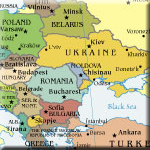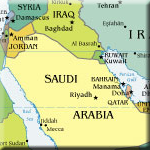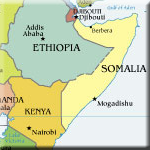




At the end of hostilities, domestic institutions have typically neither the physical resources nor the manpower to deal with the immediate issue of ensuring the physical survival of those who have survived the conflict. Fortunately, the international community has developed over the last thirty years or so a strong capacity to deal with post-conflict human emergencies. Most of the financing for these emergency operations comes from those countries that also provide the bulk of financing for the U.N. budget, and execution of emergency operations is entrusted mainly to U.N. organisations such as the World Food Program (WFP) and the High Commissioner for Refugees (UNHCR). They are assisted by a wide array of non-governmental organisations (NGO’s), the oldest and still most important of which is the Red Cross. The funding of NGO’s is not very transparent: some are indeed non-governmental, private charities, while others are funded significantly or even predominantly from state budgets. The single most important strength of both the U.N. organisations and the NGO’s is the dominance of a highly motivated, frequently enthusiastic and generally competent staff of people who often work under conditions of considerable hardship and sometimes risk their lives to get their job done. In spite of occasional problems and shortfalls in financing, this emergency system has by and large functioned quite well. For example, not a single case of mass starvation or of a major epidemic in a post-conflict situation has been reported for a number of years.
Both the strength and the limitation of the system is its focus on immediate needs, operating like an occupying military or peacekeeping force with little or no regard to the post-conflict country’s public institutions, which may or may not be able to make a meaningful contribution to solving the post-conflict emergency. This disregard for domestic institutions is an essential ingredient for the efficiency of the emergency system because it allows avoiding protracted negotiations with various local constituencies and the unavoidable compromises, trade-offs and losses of valuable time those negotiations would entail.
By the same token, the emergency system contributes one essential element to the post-conflict country’s longer-term future: the physical survival of its citizens. Beyond that contribution, other, more complex approaches are needed to help the country survive.
After ensuring the physical survival of the people, the single most important task to be addressed with the limited resources available is the establishment of a level of internal security, which is sufficient to allow ordinary civilian activities, like commerce and education, to resume to function. This must be done in an environment where crime may have become a normal and expected form of social interchange and where abiding by the law may be considered foolish, if not suicidal. Furthermore, ethnic and religious hatred may have greatly increased during the war due to the widespread atrocities that may have touched directly or indirectly every single family. In that type of situation it is quite unreasonable to expect different ethnic or religious groups to live peacefully together in a village or town. However, even in a federal structure or after partition of a country, ethnic or religious “purity” will be the exception: there will be minorities that need protection. Protection of minorities has a physical and an institutional aspect. On the physical side, protection of minorities is virtually impossible if they are thinly spread all over the country or province, since many members of minority groups will be killed at night in their houses, as in Rwanda, Bosnia and Kosovo. Minorities will probably already live concentrated in one or a few places, and some further concentration through voluntary resettlement may be advisable. This recommendation contradicts the policy adopted by the international powers in Bosnia and Kosovo. However, ethnic reconciliation and co-habitation have made little progress in those two countries, and would probably collapse without the massive intervention of NATO’s large occupation forces. This brings us to the institutional aspect of minority protection. Assuming that the required constitutional and legal guarantees have been established, enforcing those guarantees is no small task. Not a single case of a post-civil war country comes to mind where minorities would have been effectively protected without foreign intervention. Even in a relatively mature country like India, political institutions are strong enough to prevent open civil war, but not strong enough to prevent frequent and bloody religious riots where each year hundreds, if not thousands of people are killed.
Internal security is also threatened by the remainders of the army or armies that fought the war. Current practice is to rapidly demobilize soldiers, to disarm them if possible and to make some efforts to reintegrate them in society mainly through counselling and training in a civilian activity. This approach works satisfactorily, even without counselling and training, for those soldiers that can re-integrate a family or community. It does not work for the many others who are not in this fortunate position. Instead, they tend to become criminals or re-join rebel groups, mainly because civilian employment is unavailable. They also tend to keep their arms, frequently the only tool they know how to use. Programs to re-purchase these arms have generally been unsuccessful, resulting in donors or governments paying considerable sums of money for old and sometimes unusable equipment.
A different approach would not dissolve the army or armies and, after careful screening, would demobilize only those soldiers whose re-integration in civilian society is reasonably assured. The others, and that may be one in two or even more, would remain in the barracks as part of the army under a corps of officers pruned of all dangerous elements. Arms and munitions would be collected and either destroyed or put under the control of an occupying military force, if there is one. Some of the soldiers and officers, again after careful screening, could later become part of the new government’s new army. In the interim, all of these officers and soldiers could fulfil numerous productive tasks, including clearing of land mines and unexploded ordnance, clearing rubble, sewage and irrigation ditches and canals, repairing roads and simple structures, improving refugee camps and other temporary facilities, etc. They would be demobilized as and when they find civilian employment. In the mean time, they would be housed, fed, clothed, medically treated and would receive a small remuneration in cash. The whole operation would probably need some supervision by members of an occupying military force. It would also need funding from donors.
The unfortunate conclusion is that foreign intervention for peacekeeping purposes will have to remain for the foreseeable future a regular feature of international affairs. Use of martial law may be needed to prevent gang warfare, looting and other forms of violence. Those of us who prefer multilateral solutions of international problems would like to see the United Nations adequately equipped to deal with such a task, both in terms of its mandate, authorising the use of force when required for peacekeeping, and in terms of resources. Logic calls for the establishment of a permanent peacekeeping force under U.N. auspices, to deal with both, military and civilian requirements.